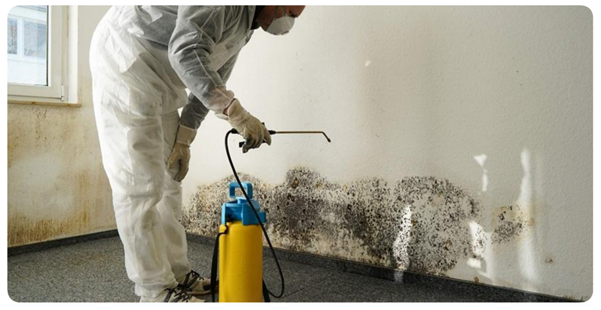How to Optimize Your Nitrogen Purging & Testing Process
Nitrogen purging and testing are essential processes in various industries, including oil and gas, chemical manufacturing, and food processing. These processes ensure the safe and efficient operation of equipment by removing unwanted gases and contaminants. Optimizing nitrogen purging and testing can enhance safety, improve efficiency, and reduce costs. This blog will explore key strategies to optimize your nitrogen purging and testing process.
NOTE : Ensure your systems operate efficiently and safely with our specialized Nitrogen Purging & Testing services. Contact us today to learn how our expert team can enhance your operational safety and efficiency. Don’t wait – safeguard your equipment and optimize performance now! Call us or visit our website to get started.
Understanding Nitrogen Purging and Testing
Nitrogen purging is a process used to remove unwanted gases and contaminants from pipelines, vessels, and other equipment by displacing them with nitrogen gas. This process is critical in industries where the presence of oxygen or other reactive gases can pose safety hazards or affect product quality. Nitrogen is used because it is an inert gas, meaning it does not react with other substances under normal conditions. This property makes it ideal for creating a safe, non-reactive environment in various applications.
Nitrogen testing, on the other hand, involves checking for leaks, verifying purity levels, and ensuring the effectiveness of the purging process. It is essential to regularly test the nitrogen purging system to ensure it is functioning correctly and efficiently. This step is crucial for maintaining the integrity of the system and preventing any potential issues that could arise from leaks or impurities.
Understanding the basics of nitrogen purging and testing is the first step toward optimizing these processes. By knowing the purpose and function of each step, you can better identify areas for improvement and implement strategies to enhance efficiency and safety.
Importance of Proper Nitrogen Purging and Testing
Proper nitrogen purging and testing are vital for several reasons. Firstly, they ensure the safety of operations by preventing the presence of hazardous gases, such as oxygen or hydrogen, which can cause explosions or other dangerous reactions. In industries like oil and gas, where flammable gases are common, ensuring a safe environment is paramount. Nitrogen purging helps achieve this by creating an inert atmosphere, reducing the risk of fire or explosion.
Secondly, effective purging and testing enhance the quality of the final product. In chemical manufacturing, for example, the presence of impurities can affect the purity and quality of the final product. By thoroughly purging equipment with nitrogen, you can remove any contaminants and ensure a higher quality product. This is particularly important in the food processing industry, where product purity and safety are critical.
Lastly, optimizing nitrogen purging and testing can lead to cost savings. By improving the efficiency of these processes, you can reduce the amount of nitrogen used, minimize downtime, and extend the lifespan of your equipment. These factors contribute to lower operational costs and higher profitability.
Steps to Optimize Nitrogen Purging
Step 1: Assess Your Current System
The first step in optimizing your nitrogen purging process is to assess your current system. Conduct a thorough review of your equipment, procedures, and performance metrics to identify any areas for improvement. This assessment should include evaluating the efficiency of your nitrogen supply, the effectiveness of your purging procedures, and the overall performance of your system. By understanding the strengths and weaknesses of your current setup, you can develop a targeted plan for optimization.
Step 2: Implement Advanced Purging Techniques
There are several advanced purging techniques that can improve the efficiency and effectiveness of your nitrogen purging process. One such technique is pressure swing adsorption (PSA), which uses varying pressure levels to separate gases and achieve higher purity levels. Another technique is membrane separation, which utilizes semi-permeable membranes to selectively remove impurities. These advanced techniques can enhance the efficiency of your purging process and reduce nitrogen consumption.
Step 3: Optimize Nitrogen Supply
Optimizing your nitrogen supply is another critical step in improving your purging process. This involves selecting the right type of nitrogen (e.g., liquid or gaseous) and ensuring a consistent and reliable supply. Consider using on-site nitrogen generation systems, which can provide a continuous supply of high-purity nitrogen and reduce reliance on external suppliers. Additionally, monitor your nitrogen usage and implement measures to minimize waste and improve efficiency.
Step 4: Regular Maintenance and Testing
Regular maintenance and testing are essential for ensuring the long-term performance and reliability of your nitrogen purging system. Develop a maintenance schedule that includes routine inspections, cleaning, and component replacements. Conduct regular testing to verify the effectiveness of your purging process and identify any potential issues before they become major problems. By maintaining your system and conducting regular testing, you can ensure optimal performance and prevent costly downtime.
Step 5: Training and Education
Investing in training and education for your staff is another crucial aspect of optimizing your nitrogen purging process. Ensure that your team is knowledgeable about the importance of nitrogen purging, the proper procedures, and the advanced techniques available. Provide ongoing training to keep your staff up-to-date with the latest industry standards and best practices. By equipping your team with the necessary skills and knowledge, you can improve the overall efficiency and safety of your purging process.
Tips for Effective Nitrogen Testing
Tip 1: Use High-Quality Testing Equipment
Using high-quality testing equipment is essential for accurate and reliable results. Invest in modern testing equipment that is specifically designed for nitrogen testing and can provide precise measurements. Ensure that your testing equipment is regularly calibrated and maintained to guarantee its accuracy and reliability. High-quality testing equipment will help you identify any issues with your purging process and make informed decisions for optimization.
Tip 2: Implement a Regular Testing Schedule
Establishing a regular testing schedule is crucial for maintaining the effectiveness of your nitrogen purging process. Develop a testing schedule that aligns with your operational needs and industry standards. Regular testing will help you detect any leaks, impurities, or inefficiencies in your system and take corrective actions promptly. Consistent testing is key to ensuring the long-term reliability and performance of your nitrogen purging system.
Tip 3: Monitor Key Performance Indicators
Monitoring key performance indicators (KPIs) is an effective way to track the performance of your nitrogen purging and testing process. Identify relevant KPIs, such as nitrogen purity levels, leak rates, and nitrogen consumption, and regularly monitor these metrics. Use the data collected to identify trends, assess the effectiveness of your optimization efforts, and make data-driven decisions for further improvements. Monitoring KPIs will help you maintain control over your nitrogen purging process and achieve continuous optimization.
Tip 4: Engage External Experts
Engaging external experts can provide valuable insights and recommendations for optimizing your nitrogen purging and testing process. Consider consulting with industry experts, engineers, or specialized service providers who have experience in nitrogen purging and testing. These experts can conduct thorough assessments, provide technical advice, and offer solutions tailored to your specific needs. Collaborating with external experts can enhance your optimization efforts and ensure the best possible results.
Conclusion
Optimizing your nitrogen purging and testing process is essential for enhancing safety, improving efficiency, and reducing costs in various industries. By understanding the importance of proper nitrogen purging and testing, implementing advanced techniques, optimizing your nitrogen supply, conducting regular maintenance and testing, and investing in training and education, you can achieve significant improvements in your operations. Additionally, using high-quality testing equipment, implementing a regular testing schedule, monitoring key performance indicators, and engaging external experts will further enhance your optimization efforts. By following these strategies and best practices, you can ensure the safe, efficient, and cost-effective operation of your nitrogen purging and testing process.
For more insightful articles related to this topic, feel free to visit liveblogs



